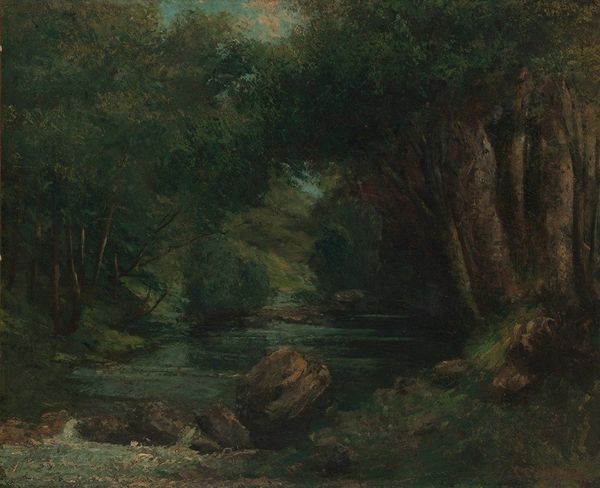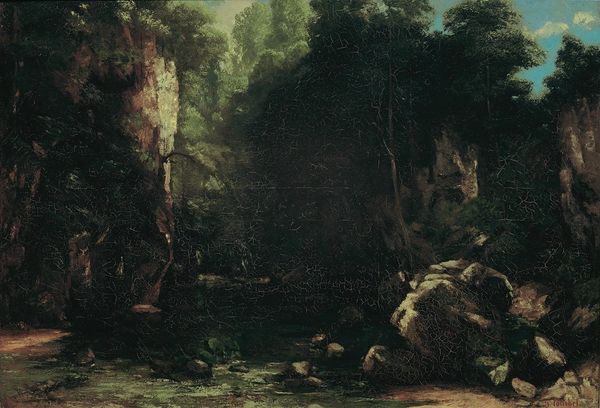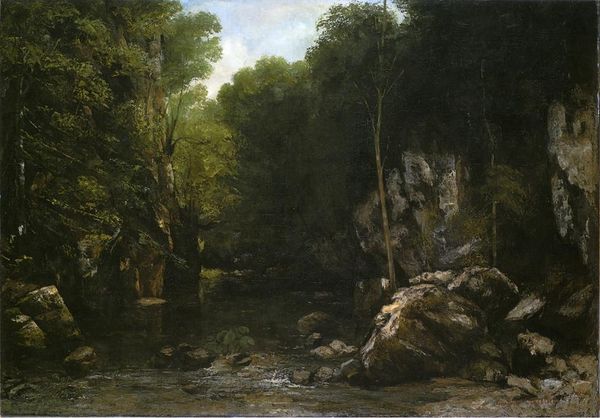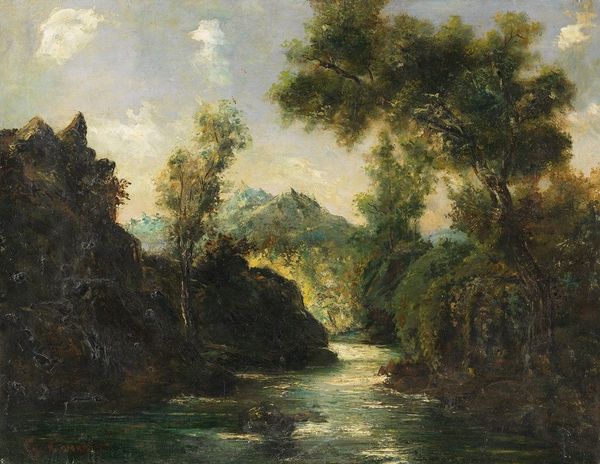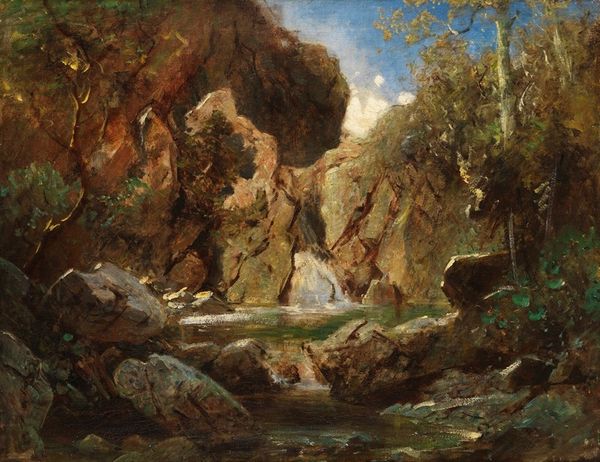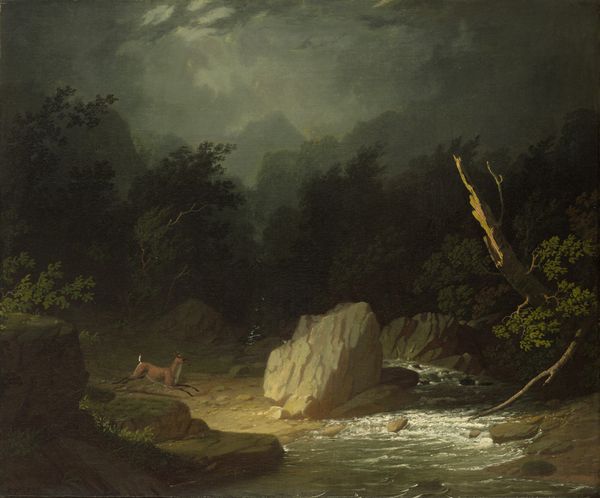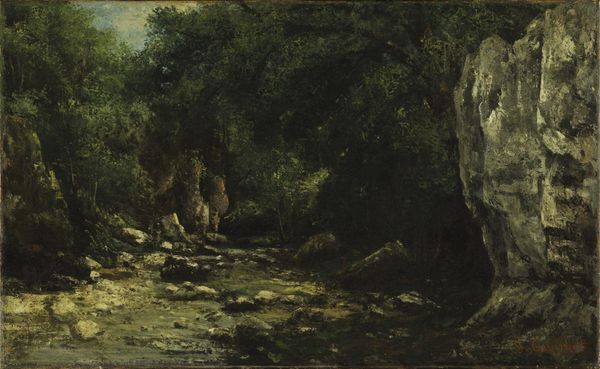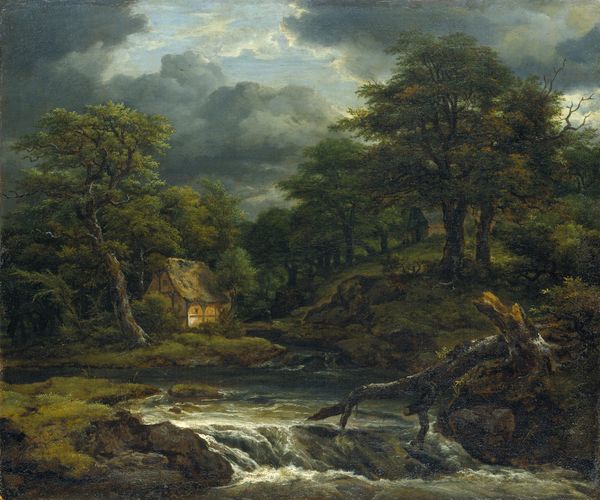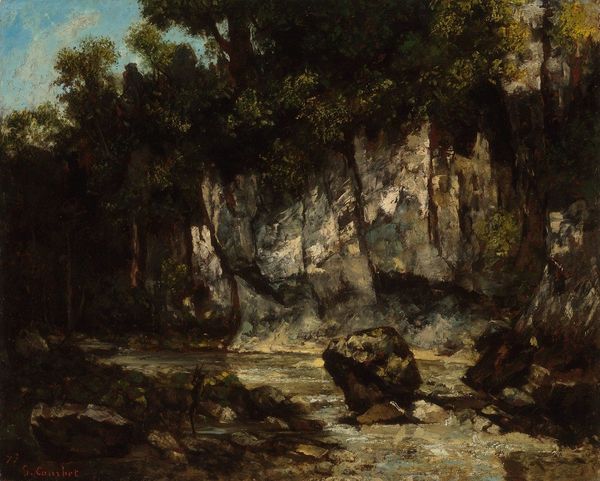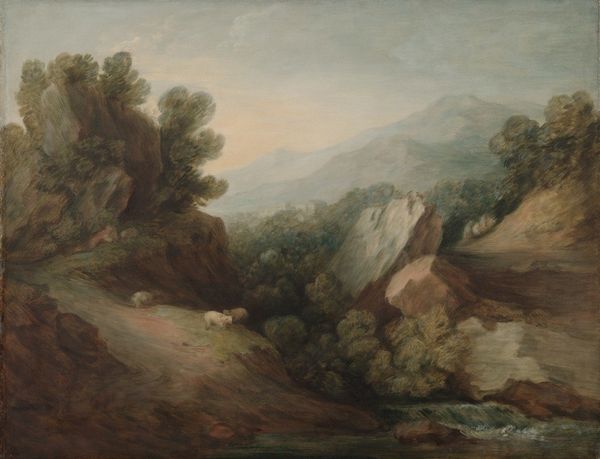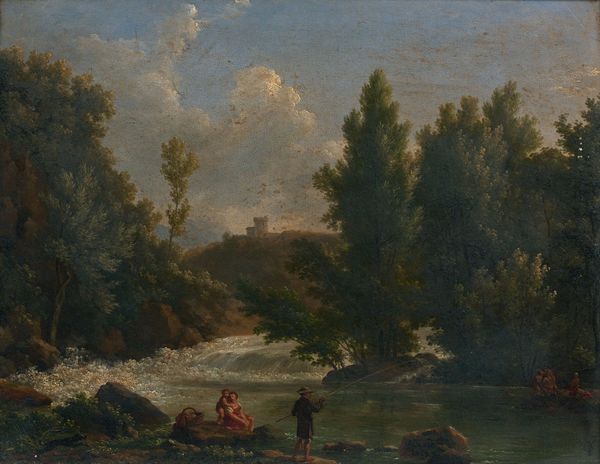
Copyright: Public Domain: Artvee
Curator: "The Valley of Les Puits-Noir," painted by Gustave Courbet around 1868. It's an oil on canvas, and it showcases Courbet's unique take on landscape painting. Editor: My first thought is how enclosed I feel just looking at this. The dense forest and rocky cliffs almost create a sense of being swallowed by nature. There's a primal quality to it. Curator: That's a good point. Courbet was working during a time when ideas of Romanticism were shifting towards Realism. He deliberately paints the scene as he sees it without idealized trappings. The composition directs our focus toward the central grotto. Editor: So you're saying the valley itself, or at least his depiction of it, wasn't necessarily trying to evoke an emotion other than perhaps, honest observation? Curator: Not in a straightforward Romantic sense, no. While the Romantics embraced grandiosity and emotional fervor in nature, Courbet focuses on the tangible and material aspects. There's evidence he wanted to capture nature as it was, democratically. His rendering gives attention to its rough and unrefined parts. Editor: Still, there's something undeniably powerful about the use of the darker greens and browns surrounding the small bit of open sky. The stream isn't just water, it's also reflecting those stark contrasts in its stillness. Does it carry some sort of symbolic meaning in landscape paintings during this era? Curator: Rivers often function symbolically as paths or thresholds in the imagery of this period, acting as markers between the known and unknown. You could consider the title itself to emphasize the symbolic nature: "The Valley of Les Puits-Noir," literally the valley of the black wells, further hints to some sort of hidden entrance to the unknown. Editor: It all contributes to that feeling of the landscape bearing witness to something. Maybe secrets or maybe simply time itself. Regardless, it has staying power as an image that lingers in your mind long after you've seen it. Curator: Precisely. The legacy lives on. Seeing Courbet’s work is a wonderful experience, especially once you appreciate its historical context and layers.
Comments
No comments
Be the first to comment and join the conversation on the ultimate creative platform.
